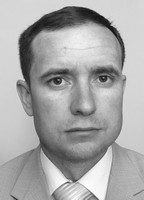Female footballers' technical fitness tests for different skill levels
Фотографии:
ˑ:
Teoriya i praktika fizicheskoy kultury №6 2017, pp.73-74
Dr.Hab., Professor I.G. Maksimenko1
PhD, Associate Professor I.Y. Voronin1
PhD, Associate Professor M.P. Spirin1
I.A. Rutskoy1
11Belgorod State National Research University, Belgorod
Initiatives to find the ways to improve the junior players’ long-term training process efficiency are presently given a high priority by the national women's football sport specialists. The leading experts believe that a prudent set of technical mastery rating criteria will play a key role in any efficiency improvement solution. It is a matter of common knowledge that the high physical fitness rates associated with high technical and tactical mastery levels help the players mobilise their resources in competitions and facilitate further progress in the long-term training process. Our analysis of the recent study reports and reference literature shows that the study subject is still underexplored and the available findings are somewhat contradictory. Objective of the study was to find a set of female footballers’ technical mastery rating criteria for different skill levels and apply the criteria to improve the training process control efficiency. We used the methods of theoretical data analysis, synthesis and summation, performance tests, educational surveys and mathematical statistical data processing tools to develop the set of women footballers’ technical mastery rating criteria for different skill levels from Class III to Master of Sport. The set of technical mastery rating criteria will be applied to establish reference points in the long-term training system design and staging process. The study also verified the efficiency and relevance of the rating tests applied for the purposes of the study.
Keywords: analysis, control, fitness, rates, test, technical fitness, female footballers.
References
- Maksimenko I.G. Sorevnovatelnaya i trenirovochnaya deyatelnost futbolistov [Competitive and training activities of footballers]. Lugansk: Znanie publ., 2009, 258 p.
- Maksimenko I.G., Voronkov A.V., Zhilina L.V. Sravnitelny analiz osobennostey mnogoletney podgotovki yunykh sportsmenov v igrovykh i tsiklicheskikh vidakh sporta [Comparative analysis of peculiarities of long-term training in youth competitive and cyclic sports]. Teoriya i praktika fiz. kultury, 2016, no. 1, pp. 11–13.
- Matveyev L.P. Obshchaya teoriya sporta i ee prikladnye aspekty [General theory of sport and its applied aspects]. Moscow: Izvestiya publ., 2001, 333 p.
- Nikitushkin V.G., Kvashuk P.V., Bauer V.G. Organizatsionno-metodicheskie osnovy podgotovki sportivnogo rezerva [Organizational and methodological basics for sports reserve athletes training]. Moscow: Sov. sport publ., 2005, 229 p.
- Platonov V.N. Sistema podgotovki sportsmenov v olimpiyskom sporte. Obshchaya teoriya i ee prakticheskie prilozheniya [Sports training system in Olympic sport. General theory and its practical applications]. Kiev: Olimp. lit., 2015, book 1, 2015, 680 p.
- Arcelli E., Ferretti F. Calcio. Preparazione atletica. IV Edizione, Milano: Editoriale Sport Italia, 2004, 134 p.
- Bompa T.O., Haff G.G. Periodization: Theory and methodology of training. [5th Edition]. Champaign, IL, USA: Human Kinetics, 2009, 280 p.



 Журнал "THEORY AND PRACTICE
Журнал "THEORY AND PRACTICE